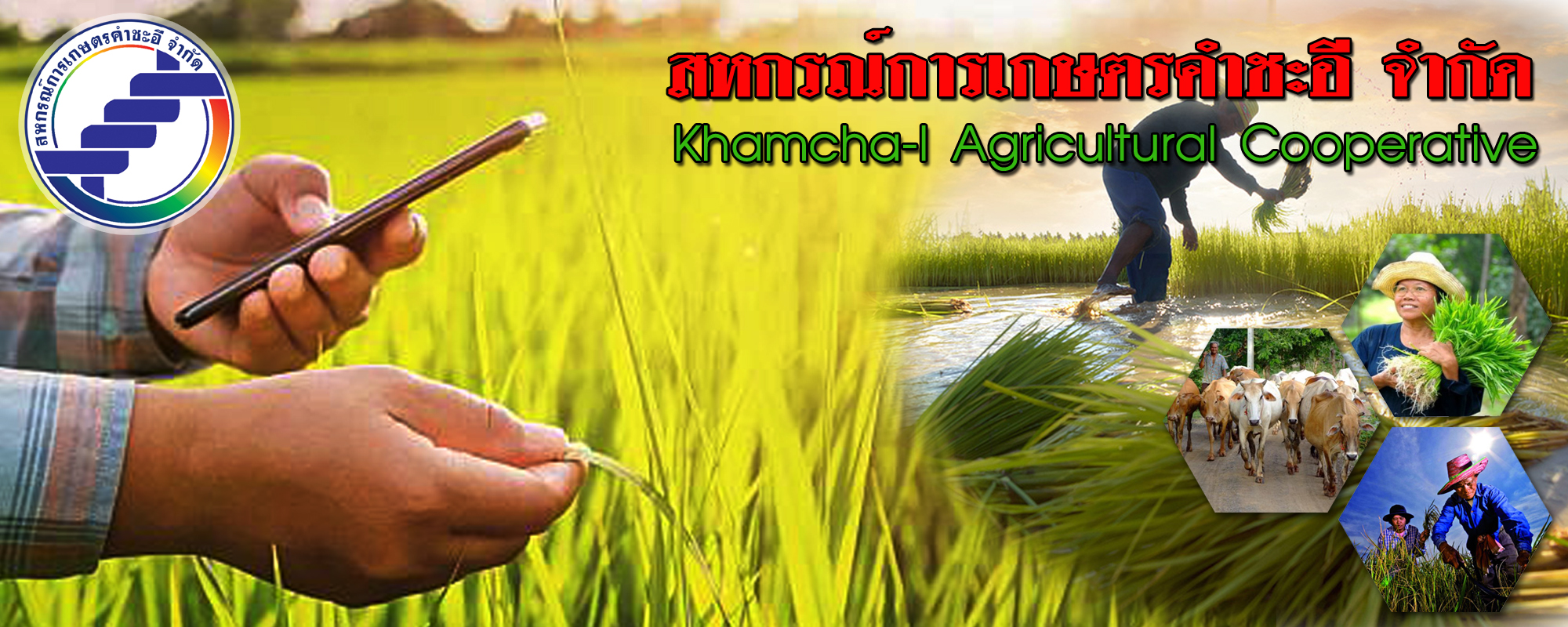×
ยินดีต้อนรับสู่ ฟอรัม Kunena!
อยากรู้จังเลยว่าคุณชอบอะไร รู้จักกับที่นี่ได้อย่างไร และสาเหตุจูงใจอะไรจึงลงทะเบียนเป็นสมาชิกกับทางเรา ช่วยแจ้งให้เราได้ทราบหน่อยได้ไหม
ยินดีต้อนรับสมาชิกใหม่ทุกท่าน และหวังว่าทางเราจะได้รับใช้คุณเยี่ยงนี้ตลอดไป
อยากรู้จังเลยว่าคุณชอบอะไร รู้จักกับที่นี่ได้อย่างไร และสาเหตุจูงใจอะไรจึงลงทะเบียนเป็นสมาชิกกับทางเรา ช่วยแจ้งให้เราได้ทราบหน่อยได้ไหม
ยินดีต้อนรับสมาชิกใหม่ทุกท่าน และหวังว่าทางเราจะได้รับใช้คุณเยี่ยงนี้ตลอดไป
Василенко
- Richardheari
- Topic Author
- Visitor
-

1 month 3 weeks ago #2599521
by Richardheari
Replied by Richardheari on topic kra10 cc
Thai farmer forced to kill more than 100 endangered crocodiles after a typhoon damaged their enclosure
<a href=https://krmp8.cc>kraken marketplace
A Thai crocodile farmer who goes by the nickname “Crocodile X” said he killed more than 100 critically endangered reptiles to prevent them from escaping after a typhoon damaged their enclosure.
Natthapak Khumkad, 37, who runs a crocodile farm in Lamphun, northern Thailand, said he scrambled to find his Siamese crocodiles a new home when he noticed a wall securing their enclosure was at risk of collapsing. But nowhere was large or secure enough to hold the crocodiles, some of which were up to 4 meters (13 feet) long.
To stop the crocodiles from getting loose into the local community, Natthapak said, he put 125 of them down on September 22.
“I had to make the most difficult decision of my life to kill them all,” he told CNN. “My family and I discussed if the wall collapsed the damage to people’s lives would be far bigger than we can control. It would involve people’s lives and public safety.”
Typhoon Yagi, Asia’s most powerful storm this year, swept across southern China and Southeast Asia this month, leaving a trail of destruction with its intense rainfall and powerful winds. Downpours inundated Thailand’s north, submerging homes and riverside villages, killing at least nine people.
Storms like Yagi are “getting stronger due to climate change, primarily because warmer ocean waters provide more energy to fuel the storms, leading to increased wind speeds and heavier rainfall,” said Benjamin Horton, director of the Earth Observatory of Singapore.
Natural disasters, including typhoons, pose a range of threats to wildlife, according to the International Fund for Animal Welfare. Flooding can leave animals stranded, in danger of drowning, or separated from their owners or families.
Rain and strong winds can also severely damage habitats and animal shelters. In 2022, Hurricane Ian hit Florida and destroyed the Little Bear Sanctuary in Punta Gorda, leaving 200 animals, including cows, horses, donkeys, pigs and birds without shelter.
The risk of natural disasters to animals is only increasing as human-caused climate change makes extreme weather events more frequent and volatile.
<a href=https://krmp8.cc>kraken marketplace
A Thai crocodile farmer who goes by the nickname “Crocodile X” said he killed more than 100 critically endangered reptiles to prevent them from escaping after a typhoon damaged their enclosure.
Natthapak Khumkad, 37, who runs a crocodile farm in Lamphun, northern Thailand, said he scrambled to find his Siamese crocodiles a new home when he noticed a wall securing their enclosure was at risk of collapsing. But nowhere was large or secure enough to hold the crocodiles, some of which were up to 4 meters (13 feet) long.
To stop the crocodiles from getting loose into the local community, Natthapak said, he put 125 of them down on September 22.
“I had to make the most difficult decision of my life to kill them all,” he told CNN. “My family and I discussed if the wall collapsed the damage to people’s lives would be far bigger than we can control. It would involve people’s lives and public safety.”
Typhoon Yagi, Asia’s most powerful storm this year, swept across southern China and Southeast Asia this month, leaving a trail of destruction with its intense rainfall and powerful winds. Downpours inundated Thailand’s north, submerging homes and riverside villages, killing at least nine people.
Storms like Yagi are “getting stronger due to climate change, primarily because warmer ocean waters provide more energy to fuel the storms, leading to increased wind speeds and heavier rainfall,” said Benjamin Horton, director of the Earth Observatory of Singapore.
Natural disasters, including typhoons, pose a range of threats to wildlife, according to the International Fund for Animal Welfare. Flooding can leave animals stranded, in danger of drowning, or separated from their owners or families.
Rain and strong winds can also severely damage habitats and animal shelters. In 2022, Hurricane Ian hit Florida and destroyed the Little Bear Sanctuary in Punta Gorda, leaving 200 animals, including cows, horses, donkeys, pigs and birds without shelter.
The risk of natural disasters to animals is only increasing as human-caused climate change makes extreme weather events more frequent and volatile.
Reply to Richardheari
- MatthewKit
- Topic Author
- Visitor
-

1 month 3 weeks ago #2599578
by MatthewKit
Replied by MatthewKit on topic kraken вход
Thai farmer forced to kill more than 100 endangered crocodiles after a typhoon damaged their enclosure
<a href=https://krmp8.cc>kraken darknet
A Thai crocodile farmer who goes by the nickname “Crocodile X” said he killed more than 100 critically endangered reptiles to prevent them from escaping after a typhoon damaged their enclosure.
Natthapak Khumkad, 37, who runs a crocodile farm in Lamphun, northern Thailand, said he scrambled to find his Siamese crocodiles a new home when he noticed a wall securing their enclosure was at risk of collapsing. But nowhere was large or secure enough to hold the crocodiles, some of which were up to 4 meters (13 feet) long.
To stop the crocodiles from getting loose into the local community, Natthapak said, he put 125 of them down on September 22.
“I had to make the most difficult decision of my life to kill them all,” he told CNN. “My family and I discussed if the wall collapsed the damage to people’s lives would be far bigger than we can control. It would involve people’s lives and public safety.”
Typhoon Yagi, Asia’s most powerful storm this year, swept across southern China and Southeast Asia this month, leaving a trail of destruction with its intense rainfall and powerful winds. Downpours inundated Thailand’s north, submerging homes and riverside villages, killing at least nine people.
Storms like Yagi are “getting stronger due to climate change, primarily because warmer ocean waters provide more energy to fuel the storms, leading to increased wind speeds and heavier rainfall,” said Benjamin Horton, director of the Earth Observatory of Singapore.
Natural disasters, including typhoons, pose a range of threats to wildlife, according to the International Fund for Animal Welfare. Flooding can leave animals stranded, in danger of drowning, or separated from their owners or families.
Rain and strong winds can also severely damage habitats and animal shelters. In 2022, Hurricane Ian hit Florida and destroyed the Little Bear Sanctuary in Punta Gorda, leaving 200 animals, including cows, horses, donkeys, pigs and birds without shelter.
The risk of natural disasters to animals is only increasing as human-caused climate change makes extreme weather events more frequent and volatile.
<a href=https://krmp8.cc>kraken darknet
A Thai crocodile farmer who goes by the nickname “Crocodile X” said he killed more than 100 critically endangered reptiles to prevent them from escaping after a typhoon damaged their enclosure.
Natthapak Khumkad, 37, who runs a crocodile farm in Lamphun, northern Thailand, said he scrambled to find his Siamese crocodiles a new home when he noticed a wall securing their enclosure was at risk of collapsing. But nowhere was large or secure enough to hold the crocodiles, some of which were up to 4 meters (13 feet) long.
To stop the crocodiles from getting loose into the local community, Natthapak said, he put 125 of them down on September 22.
“I had to make the most difficult decision of my life to kill them all,” he told CNN. “My family and I discussed if the wall collapsed the damage to people’s lives would be far bigger than we can control. It would involve people’s lives and public safety.”
Typhoon Yagi, Asia’s most powerful storm this year, swept across southern China and Southeast Asia this month, leaving a trail of destruction with its intense rainfall and powerful winds. Downpours inundated Thailand’s north, submerging homes and riverside villages, killing at least nine people.
Storms like Yagi are “getting stronger due to climate change, primarily because warmer ocean waters provide more energy to fuel the storms, leading to increased wind speeds and heavier rainfall,” said Benjamin Horton, director of the Earth Observatory of Singapore.
Natural disasters, including typhoons, pose a range of threats to wildlife, according to the International Fund for Animal Welfare. Flooding can leave animals stranded, in danger of drowning, or separated from their owners or families.
Rain and strong winds can also severely damage habitats and animal shelters. In 2022, Hurricane Ian hit Florida and destroyed the Little Bear Sanctuary in Punta Gorda, leaving 200 animals, including cows, horses, donkeys, pigs and birds without shelter.
The risk of natural disasters to animals is only increasing as human-caused climate change makes extreme weather events more frequent and volatile.
Reply to MatthewKit
- JeffreyjeM
- Topic Author
- Visitor
-

1 month 3 weeks ago #2599615
by JeffreyjeM
Replied by JeffreyjeM on topic kraken официальный сайт
Look of the Week: Forget the naked dress, Kendall Jenner makes the case for underwear as outerwear
<a href=https://krmp8.cc>kraken войти
On Monday, Kendall Jenner stepped out onto the L’Oreal Paris womenswear runway in a scarlet red Mugler gown that might have looked familiar to anyone with a sharp memory of 1999.
The front of the dress was slashed open across Jenner’s right shoulder, exposing a matching denier bra. The peekaboo moment conjured up memories of another example of fashionable flashing: Lil’ Kim’s purple embellished jumpsuit at the VMAs 26 years earlier. On the red carpet, Kim’s left breast was almost entirely revealed by an asymmetrical cut — a mirror image of Jenner’s neckline — save for a matching purple nipple pasty.
Jenner’s Mugler moment was just the latest example of a resurging tendency for underwear as outerwear. At the Nensi Dojaka runway show in London earlier this month, boxy blazers were shrugged over strappy bras while paneled bustiers in sheer fabric were paired with capri trousers and reimagined as going out tops. Brasseries were even left exposed to the elements at Erdem — a departure for a house beloved by both British acting royalty (Kristen Scott Thomas) and actual royalty (the Duchess of Cambridge). Dolce & Gabbana got the memo, too, showing satin corsets, garter belts and Madonna-esque cone bras at Milan Fashion Week on Saturday. Florence Pugh even wore one of the label’s risque designs in her first British Vogue cover last week — the circle neckline of her puff-shouldered black dress scooping just above the belly button, acting as a full-frontal frame for her bra.
But the trend extends beyond just the runways. During the first performance of her “Short n’ Sweet” tour on Monday, singer Sabrina Carpenter took to the stage in a custom Victoria’s Secret bodysuit and stockings. Hand-adorned with over 150,000 crystals, the strapless pink lace-trimmed leotard took over 140 hours to make. On Monday,YouTube star and singer Jojo Siwa inverted the fad by donning a codpiece for a headline-grabbing cover shoot with LadyGunn magazine. The 15th century undergarment was bedazzled with flesh-colored gemstones.
<a href=https://krmp8.cc>kraken войти
On Monday, Kendall Jenner stepped out onto the L’Oreal Paris womenswear runway in a scarlet red Mugler gown that might have looked familiar to anyone with a sharp memory of 1999.
The front of the dress was slashed open across Jenner’s right shoulder, exposing a matching denier bra. The peekaboo moment conjured up memories of another example of fashionable flashing: Lil’ Kim’s purple embellished jumpsuit at the VMAs 26 years earlier. On the red carpet, Kim’s left breast was almost entirely revealed by an asymmetrical cut — a mirror image of Jenner’s neckline — save for a matching purple nipple pasty.
Jenner’s Mugler moment was just the latest example of a resurging tendency for underwear as outerwear. At the Nensi Dojaka runway show in London earlier this month, boxy blazers were shrugged over strappy bras while paneled bustiers in sheer fabric were paired with capri trousers and reimagined as going out tops. Brasseries were even left exposed to the elements at Erdem — a departure for a house beloved by both British acting royalty (Kristen Scott Thomas) and actual royalty (the Duchess of Cambridge). Dolce & Gabbana got the memo, too, showing satin corsets, garter belts and Madonna-esque cone bras at Milan Fashion Week on Saturday. Florence Pugh even wore one of the label’s risque designs in her first British Vogue cover last week — the circle neckline of her puff-shouldered black dress scooping just above the belly button, acting as a full-frontal frame for her bra.
But the trend extends beyond just the runways. During the first performance of her “Short n’ Sweet” tour on Monday, singer Sabrina Carpenter took to the stage in a custom Victoria’s Secret bodysuit and stockings. Hand-adorned with over 150,000 crystals, the strapless pink lace-trimmed leotard took over 140 hours to make. On Monday,YouTube star and singer Jojo Siwa inverted the fad by donning a codpiece for a headline-grabbing cover shoot with LadyGunn magazine. The 15th century undergarment was bedazzled with flesh-colored gemstones.
Reply to JeffreyjeM
- MichaelGaing
- Topic Author
- Visitor
-

1 month 3 weeks ago #2599639
by MichaelGaing
Replied by MichaelGaing on topic kra10 cc
Thai farmer forced to kill more than 100 endangered crocodiles after a typhoon damaged their enclosure
<a href=https://krmp8.cc>kraken marketplace
A Thai crocodile farmer who goes by the nickname “Crocodile X” said he killed more than 100 critically endangered reptiles to prevent them from escaping after a typhoon damaged their enclosure.
Natthapak Khumkad, 37, who runs a crocodile farm in Lamphun, northern Thailand, said he scrambled to find his Siamese crocodiles a new home when he noticed a wall securing their enclosure was at risk of collapsing. But nowhere was large or secure enough to hold the crocodiles, some of which were up to 4 meters (13 feet) long.
To stop the crocodiles from getting loose into the local community, Natthapak said, he put 125 of them down on September 22.
“I had to make the most difficult decision of my life to kill them all,” he told CNN. “My family and I discussed if the wall collapsed the damage to people’s lives would be far bigger than we can control. It would involve people’s lives and public safety.”
Typhoon Yagi, Asia’s most powerful storm this year, swept across southern China and Southeast Asia this month, leaving a trail of destruction with its intense rainfall and powerful winds. Downpours inundated Thailand’s north, submerging homes and riverside villages, killing at least nine people.
Storms like Yagi are “getting stronger due to climate change, primarily because warmer ocean waters provide more energy to fuel the storms, leading to increased wind speeds and heavier rainfall,” said Benjamin Horton, director of the Earth Observatory of Singapore.
Natural disasters, including typhoons, pose a range of threats to wildlife, according to the International Fund for Animal Welfare. Flooding can leave animals stranded, in danger of drowning, or separated from their owners or families.
Rain and strong winds can also severely damage habitats and animal shelters. In 2022, Hurricane Ian hit Florida and destroyed the Little Bear Sanctuary in Punta Gorda, leaving 200 animals, including cows, horses, donkeys, pigs and birds without shelter.
The risk of natural disasters to animals is only increasing as human-caused climate change makes extreme weather events more frequent and volatile.
<a href=https://krmp8.cc>kraken marketplace
A Thai crocodile farmer who goes by the nickname “Crocodile X” said he killed more than 100 critically endangered reptiles to prevent them from escaping after a typhoon damaged their enclosure.
Natthapak Khumkad, 37, who runs a crocodile farm in Lamphun, northern Thailand, said he scrambled to find his Siamese crocodiles a new home when he noticed a wall securing their enclosure was at risk of collapsing. But nowhere was large or secure enough to hold the crocodiles, some of which were up to 4 meters (13 feet) long.
To stop the crocodiles from getting loose into the local community, Natthapak said, he put 125 of them down on September 22.
“I had to make the most difficult decision of my life to kill them all,” he told CNN. “My family and I discussed if the wall collapsed the damage to people’s lives would be far bigger than we can control. It would involve people’s lives and public safety.”
Typhoon Yagi, Asia’s most powerful storm this year, swept across southern China and Southeast Asia this month, leaving a trail of destruction with its intense rainfall and powerful winds. Downpours inundated Thailand’s north, submerging homes and riverside villages, killing at least nine people.
Storms like Yagi are “getting stronger due to climate change, primarily because warmer ocean waters provide more energy to fuel the storms, leading to increased wind speeds and heavier rainfall,” said Benjamin Horton, director of the Earth Observatory of Singapore.
Natural disasters, including typhoons, pose a range of threats to wildlife, according to the International Fund for Animal Welfare. Flooding can leave animals stranded, in danger of drowning, or separated from their owners or families.
Rain and strong winds can also severely damage habitats and animal shelters. In 2022, Hurricane Ian hit Florida and destroyed the Little Bear Sanctuary in Punta Gorda, leaving 200 animals, including cows, horses, donkeys, pigs and birds without shelter.
The risk of natural disasters to animals is only increasing as human-caused climate change makes extreme weather events more frequent and volatile.
Reply to MichaelGaing
- WallyTah
- Topic Author
- Visitor
-

1 month 3 weeks ago #2599665
by WallyTah
Replied by WallyTah on topic kraken shop
Look of the Week: Forget the naked dress, Kendall Jenner makes the case for underwear as outerwear
<a href=https://krmp8.cc>kraken вход
On Monday, Kendall Jenner stepped out onto the L’Oreal Paris womenswear runway in a scarlet red Mugler gown that might have looked familiar to anyone with a sharp memory of 1999.
The front of the dress was slashed open across Jenner’s right shoulder, exposing a matching denier bra. The peekaboo moment conjured up memories of another example of fashionable flashing: Lil’ Kim’s purple embellished jumpsuit at the VMAs 26 years earlier. On the red carpet, Kim’s left breast was almost entirely revealed by an asymmetrical cut — a mirror image of Jenner’s neckline — save for a matching purple nipple pasty.
Jenner’s Mugler moment was just the latest example of a resurging tendency for underwear as outerwear. At the Nensi Dojaka runway show in London earlier this month, boxy blazers were shrugged over strappy bras while paneled bustiers in sheer fabric were paired with capri trousers and reimagined as going out tops. Brasseries were even left exposed to the elements at Erdem — a departure for a house beloved by both British acting royalty (Kristen Scott Thomas) and actual royalty (the Duchess of Cambridge). Dolce & Gabbana got the memo, too, showing satin corsets, garter belts and Madonna-esque cone bras at Milan Fashion Week on Saturday. Florence Pugh even wore one of the label’s risque designs in her first British Vogue cover last week — the circle neckline of her puff-shouldered black dress scooping just above the belly button, acting as a full-frontal frame for her bra.
But the trend extends beyond just the runways. During the first performance of her “Short n’ Sweet” tour on Monday, singer Sabrina Carpenter took to the stage in a custom Victoria’s Secret bodysuit and stockings. Hand-adorned with over 150,000 crystals, the strapless pink lace-trimmed leotard took over 140 hours to make. On Monday,YouTube star and singer Jojo Siwa inverted the fad by donning a codpiece for a headline-grabbing cover shoot with LadyGunn magazine. The 15th century undergarment was bedazzled with flesh-colored gemstones.
<a href=https://krmp8.cc>kraken вход
On Monday, Kendall Jenner stepped out onto the L’Oreal Paris womenswear runway in a scarlet red Mugler gown that might have looked familiar to anyone with a sharp memory of 1999.
The front of the dress was slashed open across Jenner’s right shoulder, exposing a matching denier bra. The peekaboo moment conjured up memories of another example of fashionable flashing: Lil’ Kim’s purple embellished jumpsuit at the VMAs 26 years earlier. On the red carpet, Kim’s left breast was almost entirely revealed by an asymmetrical cut — a mirror image of Jenner’s neckline — save for a matching purple nipple pasty.
Jenner’s Mugler moment was just the latest example of a resurging tendency for underwear as outerwear. At the Nensi Dojaka runway show in London earlier this month, boxy blazers were shrugged over strappy bras while paneled bustiers in sheer fabric were paired with capri trousers and reimagined as going out tops. Brasseries were even left exposed to the elements at Erdem — a departure for a house beloved by both British acting royalty (Kristen Scott Thomas) and actual royalty (the Duchess of Cambridge). Dolce & Gabbana got the memo, too, showing satin corsets, garter belts and Madonna-esque cone bras at Milan Fashion Week on Saturday. Florence Pugh even wore one of the label’s risque designs in her first British Vogue cover last week — the circle neckline of her puff-shouldered black dress scooping just above the belly button, acting as a full-frontal frame for her bra.
But the trend extends beyond just the runways. During the first performance of her “Short n’ Sweet” tour on Monday, singer Sabrina Carpenter took to the stage in a custom Victoria’s Secret bodysuit and stockings. Hand-adorned with over 150,000 crystals, the strapless pink lace-trimmed leotard took over 140 hours to make. On Monday,YouTube star and singer Jojo Siwa inverted the fad by donning a codpiece for a headline-grabbing cover shoot with LadyGunn magazine. The 15th century undergarment was bedazzled with flesh-colored gemstones.
Reply to WallyTah
- NathanTorry
- Topic Author
- Visitor
-

1 month 3 weeks ago #2599700
by NathanTorry
Replied by NathanTorry on topic кракен
Thai farmer forced to kill more than 100 endangered crocodiles after a typhoon damaged their enclosure
<a href=https://krmp8.cc>kraken официальный сайт
A Thai crocodile farmer who goes by the nickname “Crocodile X” said he killed more than 100 critically endangered reptiles to prevent them from escaping after a typhoon damaged their enclosure.
Natthapak Khumkad, 37, who runs a crocodile farm in Lamphun, northern Thailand, said he scrambled to find his Siamese crocodiles a new home when he noticed a wall securing their enclosure was at risk of collapsing. But nowhere was large or secure enough to hold the crocodiles, some of which were up to 4 meters (13 feet) long.
To stop the crocodiles from getting loose into the local community, Natthapak said, he put 125 of them down on September 22.
“I had to make the most difficult decision of my life to kill them all,” he told CNN. “My family and I discussed if the wall collapsed the damage to people’s lives would be far bigger than we can control. It would involve people’s lives and public safety.”
Typhoon Yagi, Asia’s most powerful storm this year, swept across southern China and Southeast Asia this month, leaving a trail of destruction with its intense rainfall and powerful winds. Downpours inundated Thailand’s north, submerging homes and riverside villages, killing at least nine people.
Storms like Yagi are “getting stronger due to climate change, primarily because warmer ocean waters provide more energy to fuel the storms, leading to increased wind speeds and heavier rainfall,” said Benjamin Horton, director of the Earth Observatory of Singapore.
Natural disasters, including typhoons, pose a range of threats to wildlife, according to the International Fund for Animal Welfare. Flooding can leave animals stranded, in danger of drowning, or separated from their owners or families.
Rain and strong winds can also severely damage habitats and animal shelters. In 2022, Hurricane Ian hit Florida and destroyed the Little Bear Sanctuary in Punta Gorda, leaving 200 animals, including cows, horses, donkeys, pigs and birds without shelter.
The risk of natural disasters to animals is only increasing as human-caused climate change makes extreme weather events more frequent and volatile.
<a href=https://krmp8.cc>kraken официальный сайт
A Thai crocodile farmer who goes by the nickname “Crocodile X” said he killed more than 100 critically endangered reptiles to prevent them from escaping after a typhoon damaged their enclosure.
Natthapak Khumkad, 37, who runs a crocodile farm in Lamphun, northern Thailand, said he scrambled to find his Siamese crocodiles a new home when he noticed a wall securing their enclosure was at risk of collapsing. But nowhere was large or secure enough to hold the crocodiles, some of which were up to 4 meters (13 feet) long.
To stop the crocodiles from getting loose into the local community, Natthapak said, he put 125 of them down on September 22.
“I had to make the most difficult decision of my life to kill them all,” he told CNN. “My family and I discussed if the wall collapsed the damage to people’s lives would be far bigger than we can control. It would involve people’s lives and public safety.”
Typhoon Yagi, Asia’s most powerful storm this year, swept across southern China and Southeast Asia this month, leaving a trail of destruction with its intense rainfall and powerful winds. Downpours inundated Thailand’s north, submerging homes and riverside villages, killing at least nine people.
Storms like Yagi are “getting stronger due to climate change, primarily because warmer ocean waters provide more energy to fuel the storms, leading to increased wind speeds and heavier rainfall,” said Benjamin Horton, director of the Earth Observatory of Singapore.
Natural disasters, including typhoons, pose a range of threats to wildlife, according to the International Fund for Animal Welfare. Flooding can leave animals stranded, in danger of drowning, or separated from their owners or families.
Rain and strong winds can also severely damage habitats and animal shelters. In 2022, Hurricane Ian hit Florida and destroyed the Little Bear Sanctuary in Punta Gorda, leaving 200 animals, including cows, horses, donkeys, pigs and birds without shelter.
The risk of natural disasters to animals is only increasing as human-caused climate change makes extreme weather events more frequent and volatile.
Reply to NathanTorry
Time to create page: 4.945 seconds












